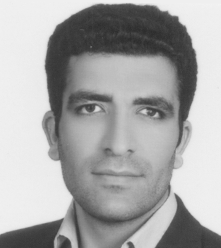BI-OBJECTIVE OPTIMIZATION OF REDUNDANCY ALLOCATION IN SERIES-PARALLEL SYSTEMS WITH REPAIRABLE COMPONENTS USING SIMULATED ANNEALING-BASED MULTI-OBJECTIVE
A Bi-objective redundancy allocation problem in series-parallel systems with repairable components is addressed in this paper. A new method is proposed for this problem. In the repairable systems with multiple components the concept of availability is used instead of reliability concept and the stability of the system is important. Stability of the system can be defined as availability before the first corruption of the system. There are two main strategies to increase system reliability. The first strategy, raising the reliability of system components and another one is to add the surplus components in parallel. Due to economic and technological limitations, the best and most practical way to increase system reliability is second strategy as we considered in this research. In this paper, non-exponential distribution is considered for failure rate and repair time of components. The first objective aims to maximize the availability of the complex system. Simultaneous with the availability of the system, the total operating cost related to components is the second objective of interest to be minimized. The target of this optimization problem is to allocate adaptable redundant components to increase the system`s availability considering all limitations like system`s volume and budget. Due to the complexity of the problem is that because of steady distribution, the series-parallel system, for each subsystem with parallel components the scale of availability is separately calculated by simulation approach and the result used as an archive in the solution method. In order to solve this multi objective problem, the authors used an evolutionary algorithm named the simulated annealing based multi objective genetic algorithm (SAMOGA) for solving the mentioned problem. In order to evaluate the efficiency and performance of the suggested algorithm, the experimental results obtained on designed instances are compared statistically with Non-dominated Sorting Genetic Algorithm (NSGA-II) and multi objective particle swarm optimization (MOPSO) according to the multi objective comparison measures. The results confirm that the implemented simulated annealing based multi objective genetic algorithm is better than other solution algorithms.
- حق عضویت دریافتی صرف حمایت از نشریات عضو و نگهداری، تکمیل و توسعه مگیران میشود.
- پرداخت حق اشتراک و دانلود مقالات اجازه بازنشر آن در سایر رسانههای چاپی و دیجیتال را به کاربر نمیدهد.


